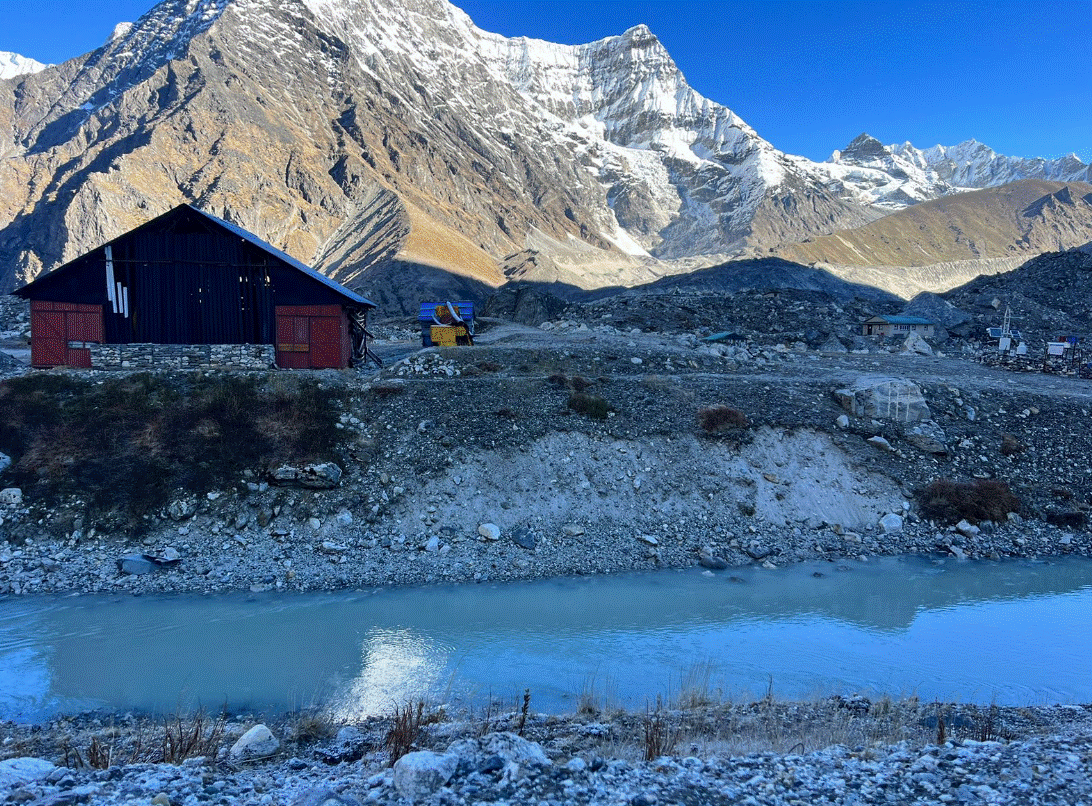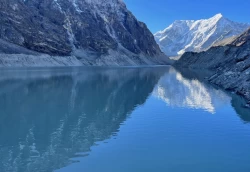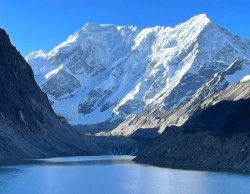Climate

Brianna Rick, University of Alaska Anchorage
In August 2023, residents of Juneau, Alaska, watched as the Mendenhall River swelled to historic levels in a matter of hours. The rushing water undercut the riverbank and swallowed whole stands of trees and multiple buildings.
The source for the flood was not heavy rainfall – it was a small glacial lake located in a side valley next to the Mendenhall Glacier.
Glacier-dammed lakes like this are abundant in Alaska. They form when a side valley loses its ice faster than the main valley, leaving an ice-free basin that can fill with water. These lakes may remain stable for years, but often they reach a tipping point, when high water pressure opens a channel underneath the glacier.
The rapid and catastrophic drainage of lake water that follows is called a glacial lake outburst flood, or GLOF for short. The flood waters race downstream over hours or days and often hit unexpectedly.
Glacial lake outburst floods have destroyed homes, infrastructure and human life around the world. They have killed hundreds of people in Europe and thousands of people in both South America and central Asia. Globally, an estimated 15 million people live downstream from these lakes, with those in Asia’s high mountains at greatest risk.
Flooding from a glacial lake in the Himalayas on Oct. 5, 2023, left dozens of people dead in India as water swept away bridges, damaged a hydropower station and flooded small towns. Satellite images showed that the lake level dropped markedly within hours.
I study Alaska’s glacial lakes and the hazards that glacier-dammed lakes in particular can create. Our latest research shows how these lakes are changing as global temperatures rise.
When glaciers hold back lakes
Some glacial lakes are dammed by moraines – mounds of rock and debris that are left behind as a glacier retreats. Too much pressure from extreme rainfall or an avalanche or landslide into the lake can burst these dams, triggering a devastating flood. Officials say that’s likely what happened when the Himalayas’ Lhonak Lake flooded towns in India in October 2023.
Glacier-dammed lakes, like Suicide Basin off of Mendenhall Glacier, are instead dammed by the glacier itself.
These glacial lakes tend to repeatedly fill and drain due to a cyclic opening and closing of a drainage path under the ice. The fill-and-drain cycles can create hazards every couple of years or multiple times a year.
How glacier lake hazards are changing in Alaska
In a new study, we identified 120 glacier-dammed lakes in Alaska, 106 of which have drained at least once since 1985.
These lakes have collectively drained 1,150 times over 35 years. That is an average of 33 events every year where a lake drains its contents, sending a pulse of water downstream and creating potentially hazardous conditions.
Many of these lakes are in remote locations and often go undetected, while others are much closer to communities, such as Suicide Basin, which is within 5 miles of the state capital and has frequently drained over the past decade.
Our study found that, as a whole, glacier-dammed lakes in Alaska have decreased in volume since 1985, while the frequency of outbursts remains unchanged. This suggests a regional decline in the potential hazards from glacier-dammed lakes because less stored water is available, a trend that has been documented for glacier-dammed lakes worldwide.
To better understand this trend, imagine a bathtub. The higher the sides of the tub, the more water it can hold. For a glacier-dammed lake, the glacier acts as a side of the bathtub. Warming air temperatures are causing glaciers to melt and thin, lowering the tub walls and therefore accommodating less water. That reduces the total volume of water available for a potential glacial lake outburst flood.
Smaller lakes, however, have had less significant change in area over time. As the August 2023 event clearly illustrated, even small lakes can have significant effects downstream.
Alaskans witnessed a new record of destruction in Juneau from the flood. The water reached nearly 15 feet at the Mendenhall River gauge – 3 feet above its previous record.
In summer 2023 alone, Alaskans saw record or near-record flooding from multiple glacier-dammed lakes near populated areas or infrastructure, such as Suicide Basin, near Juneau; Skilak Glacier-Dammed Lake, which affects the Kenai River; and Snow Lake, which impacts the Snow River. These lakes have remained about the same volume but have produced some larger floods in recent years.
One possible explanation is that with a thinner and weaker ice dam, the water can drain much more quickly, though further research is needed to understand the mechanics. Regardless, it’s a reminder that these lakes and events are unpredictable.
How will rising temperatures affect these lakes?
Glacier loss in Alaska is accelerating as temperatures rise. Due to the large volume of glaciers and the many intersecting valleys filled with ice in Alaska, there is a high probability that new lakes will develop as side valleys deglaciate, introducing new potential hazards.
Many of these lakes are likely to develop in remote locations, and their presence may only be noticed in satellite images that reveal changes over time.
Given the abundance of glacial lakes and their potential threat to human lives, early warning and monitoring systems are worryingly sparse. Efforts are underway, such as those in the Himalayas and Chile, but further research is needed to develop reliable, low-cost monitoring systems and to improve our understanding of these evolving hazards.
Also Read: Kathmandu's poor air quality takes a toll on children’s health![]()
Brianna Rick, Postdoctoral Fellow, Alaska Climate Adaptation Science Center, University of Alaska Anchorage
This article is republished from The Conversation under a Creative Commons license. Read the original article.






